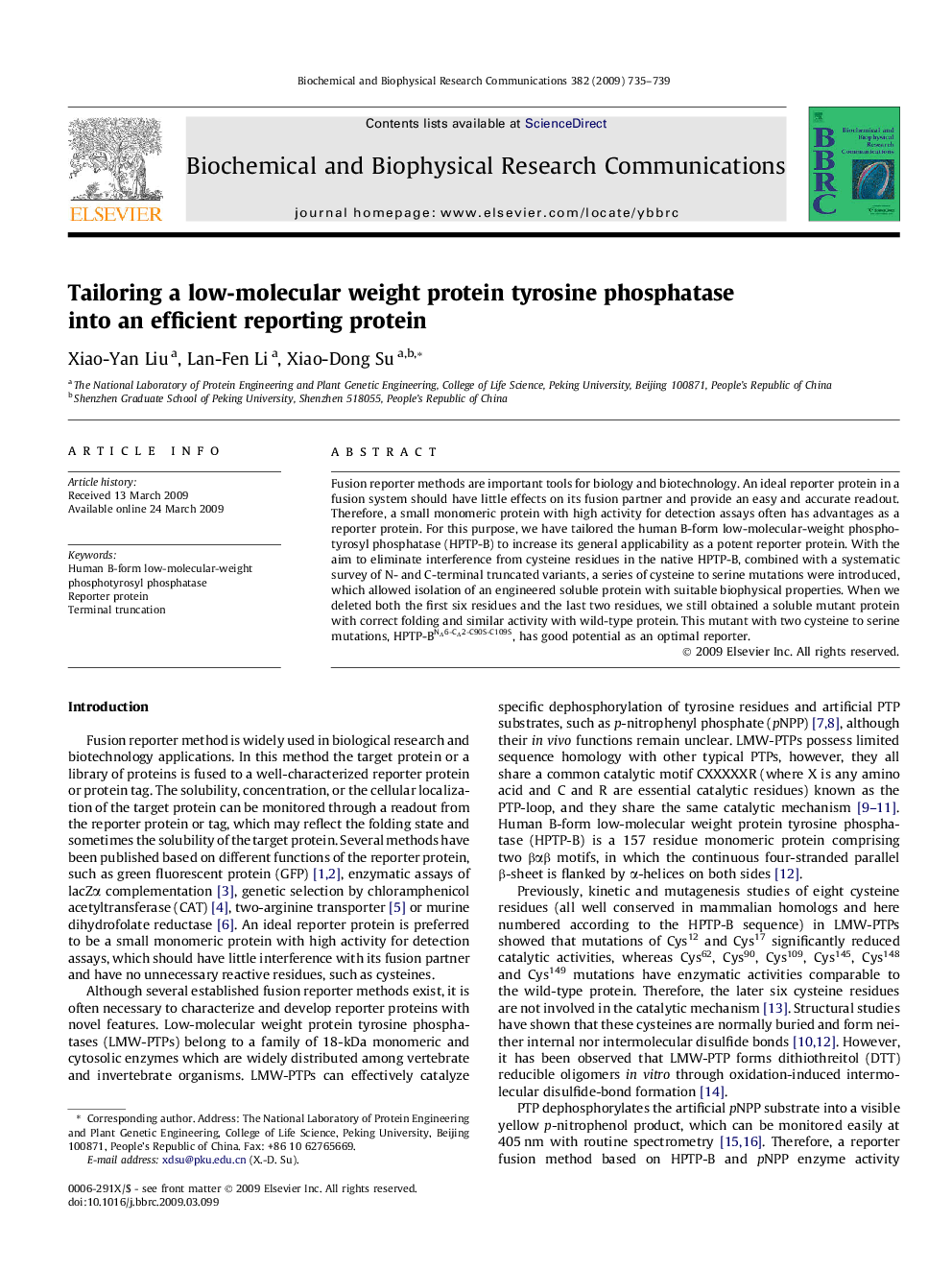| Article ID | Journal | Published Year | Pages | File Type |
|---|---|---|---|---|
| 1933753 | Biochemical and Biophysical Research Communications | 2009 | 5 Pages |
Fusion reporter methods are important tools for biology and biotechnology. An ideal reporter protein in a fusion system should have little effects on its fusion partner and provide an easy and accurate readout. Therefore, a small monomeric protein with high activity for detection assays often has advantages as a reporter protein. For this purpose, we have tailored the human B-form low-molecular-weight phosphotyrosyl phosphatase (HPTP-B) to increase its general applicability as a potent reporter protein. With the aim to eliminate interference from cysteine residues in the native HPTP-B, combined with a systematic survey of N- and C-terminal truncated variants, a series of cysteine to serine mutations were introduced, which allowed isolation of an engineered soluble protein with suitable biophysical properties. When we deleted both the first six residues and the last two residues, we still obtained a soluble mutant protein with correct folding and similar activity with wild-type protein. This mutant with two cysteine to serine mutations, HPTP-BNΔ6-CΔ2-C90S-C109SHPTP-BNΔ6-CΔ2-C90S-C109S, has good potential as an optimal reporter.
